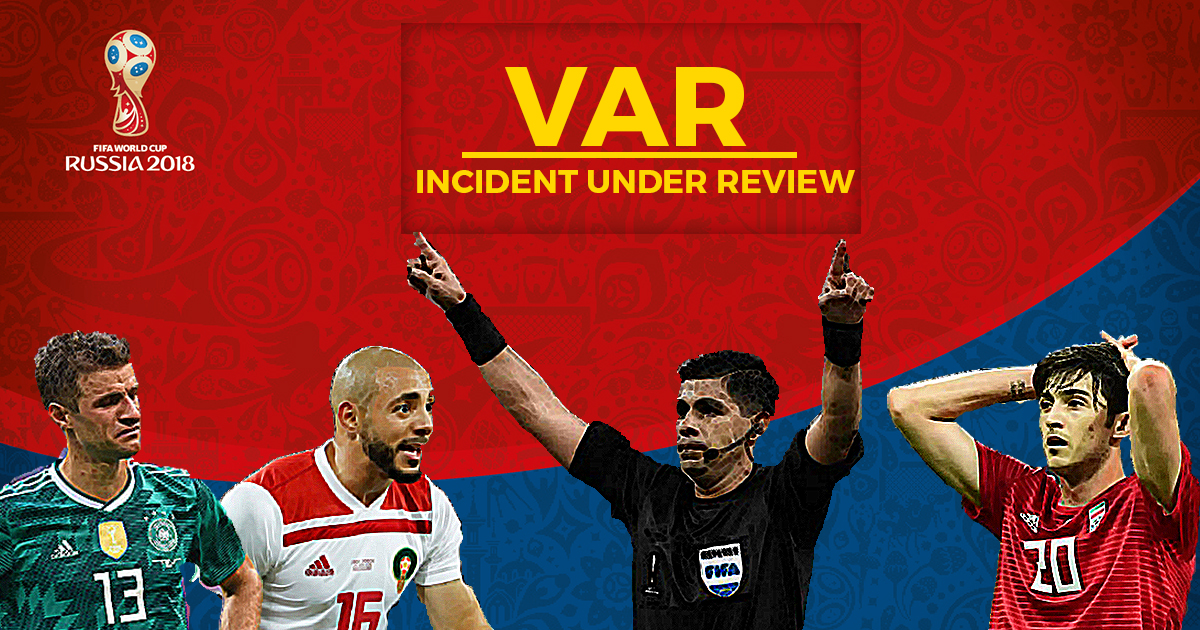Unpopular Opinion | VAR is a complete waste of time
Man’s innate urge to attain perfection and control everything has brought both success and calamity and, more often than not, has distorted nature's rhythm. The same could be said about FIFA’s introduction of Video Assistant Referee (VAR), which has done more damage than good, in the World Cup.

After the World Cup group stages came to an end, FIFA had released a statement lionizing the VAR’s success in the group stages of the competition. Chairman of FIFA’s referees' committee, Pierluigi Collina, claimed, “335 incidents were checked by the VAR team. All the goals scored (122) were checked by the VAR and in addition to many other incidents occurring on the field. Within these 335 checks, we had 17 so-called VAR reviews. We had 14 decisions changed by the intervention of the VAR. We had 14 on-field reviews, with the referee going to the monitor on the side of the pitch, while there were three decisions taken only by the VAR on direct review.”
But, no one really bought the success rate percentage that was announced, especially after the woeful weeks of refereeing and the claim, in many ways, seemed to be an act of damage control. First of all, the decision to bring in VAR in a world tournament, which is being watched by billions all over the globe, was calamitous itself. Secondly, the very motif of this system was to deal with the biggest problem in World Football. No not an obvious mistake by the officials but rather, consistency of decisions by different referees. Maradona's "Hand of God" or a Frank Lampard's "Ghost Goal" is like Halley's comet while two referees seeing the same incident and coming up with opposite conclusions is more like Neymar diving - you get used to it after a while.
A very basic example would be the contrasting refereeing styles of two individuals monitoring two separate leagues. A referee plying his trade in the English Premier League, where the very essence of playing the game revolves around physicality, would never be on the same page as a referee from Spain, where the game is governed by slow buildups, and intelligent breakthroughs and physical intimidation is frowned upon. That is basically where the crux of the problem lies. For a simple 50-50 challenge, one official is likely to allow play to continue while the other might not only stop it but also award a booking as well.
Factor this - In the Iran-Portugal match, Cristiano Ronaldo’s off-the-ball swing on Iran defender Morteza Pouraliganji resulted in the Portuguese skipper being awarded a yellow card after Paraguayan referee Enrique Cáceres evaluated the act on the screen at the sidelines. Iran manager Carlos Queiroz’s storming down into the tunnel had correctly summed up his reaction to the decision made by the official. And to understand the crux of the problem, Queiroz’s post-match quote had beautifully summed it up. “My daughter can’t come home and say I’m sort of a granddad; either she’s pregnant or she’s not,” he had said.
In a game like
Football is obviously not the only contact sport that has resorted to a digital reviewing of decisions on the field of play. Rugby and American Football have welcomed technology into their sport with open arms and have used it more efficiently, although there are still some flaws. The Rugby Union has accepted Television Match Official (TMO) over the years and there is a good reason for it. Although the video assistance has proved to be interruptive in the game, it has also been found to extremely efficient – so much so that the association has now extended its usage from just determining that a try has been scored or not, to potential infringements in the run-up to a score, and to even a possible foul play. Hence, the start-stop thing has pretty much been accepted in the game. As far as the NFL is concerned, since the actual action on the field in a 3 and a half hour game is actually restricted to just 11 minutes, the referees check every call and even the coaches are allowed to call reviews only to a specified rulebook.
VAR in football doesn’t solve half the problems that video assistance does for Rugby and NFL. Football has mostly used it to verify fouls and goals so far but even then it has failed. Despite having access to VAR, the referee in the Spain-Morroco game failed to spot a two-footed tackle by Gerard Pique that should have been a straight red and Morroco fans can attest that it was nothing short of a Hand of God for them. One of biggest expectation that was placed on the shoulders of VARs were to completely eradicate the biggest infestation in world football now - diving - but the video assistants have failed us there as well.
Another massive pain to the football fans’ eyes is the sudden increase in disagreement because of the introduction of VAR, which pretty much proves that VAR was just not supposed to work in football, despite the associations’ strange will to hold on to it. In a game driven by emotions and aesthetics, it is frustrating to see players and coaches willing to review every single referee decisions, which wasn’t the case until a few years back. The referee’s decision was final and if at all the fans and managers were unhappy with it, a huge sigh of frustration was their only outlet and realizing that human error exists, they made their peace with it. However, VAR has not only diminished a referee’s respectability but has also given the people a way to extend their rage at the decisions that in most cases would amount to nothing.
Among the major sports, only cricket, badminton, hockey, and tennis can claim to have achieved perfection in righting the wrong, The Hawkeye used in the sports gives a picture-perfect representation of where the ball has impacted, and the closest football has come to that has been the goal-line technology. And it is this perfection that football must aspire to have, if it is at all possible.

Comments
Sign up or log in to your account to leave comments and reactions
0 Comments